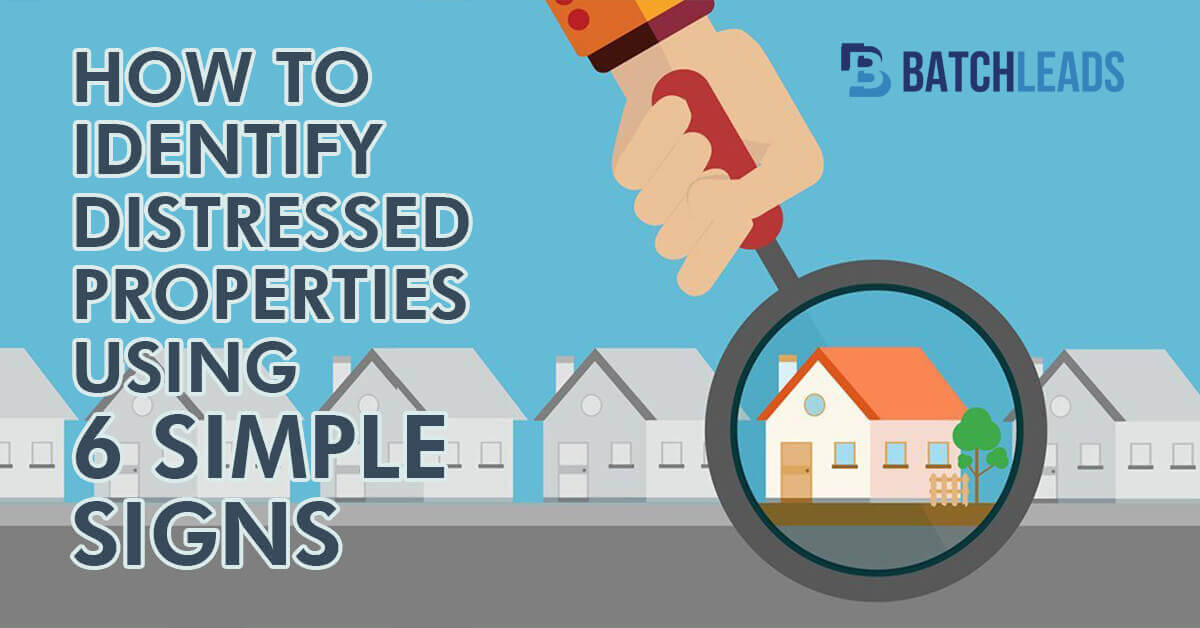Distressed properties hold a fantastic amount of potential for a real estate flipper or wholesaler who is willing to buy in as-is condition. But for the deal to really turn a good profit, wholesalers need to identify these properties quickly. In some cases, the owner has fallen on hard times and can’t sell the property for retail value. It could be a health issue, loss of income, or even a death in the family. What these property owners need is a cash buyer who is willing to help them out of this stressful situation.
A wholesaler’s offer is very appealing to these property owners because they are not going to require inspections and appraisals. The deal can be done quickly, and the stressed homeowner can walk away with cash in pocket and no more worries about a house in disrepair.
But before you can partake of these moneymaking deals, you need to know how to spot a distressed property before it is in the hands of another investor or realtor. These signs of a distressed property will help you to identify which homeowners could be very motivated to sell for a fast cash offer.
- Vacancy – When you see newspapers and door hangers lying all over the front steps or the driveway, it is a good bet that no one is living in the property. You might also find that the city or utility company has posted a service shut off notice on the door or front window of the property. Vandalism is also a good indication that no one is living in the home.
- General Disrepair – When you drive by a house that clearly needs repairs, you are likely to have found a homeowner who is unable to afford the upkeep of the home. Broken or boarded up windows and doors are easy to spot, and they tell you all that you need to know. Also, look for missing or sagging gutters, damaged roofing or tarps over part or all of the roof, and overgrown or dead trees and landscaping.
- Updates Needed – Again, if the house needs work, there must be a reason that the homeowner has not had the work completed. Peeling paint, damaged siding, roofing, or sidewalks are all signs that the owner cannot afford the care that the house needs.
- Window air conditioning units – If you live in a climate where central air is necessary, window AC units are a dead giveaway. This single item tells you that the owner cannot afford to add central air and is trying to find a way to maintain some level of comfort in the hot weather. And you know that if the HVAC has not been updated, then the rest of the systems in the house are going to need some updating as well. This type of home is not going to sell for full market value and is perfect for wholesaling.
- Accessibility Ramps – This is a reliable indication of an aging owner. And in most cases, the person has lived in the home for decades. Older homeowners often live on a very tight budget and only remain in the house because it is paid for. They cannot afford updates and repairs when they are needed, so they make due as best they can. You might even find that the owner is deceased. The family is happy to entertain an all-cash as-is offer because they have no interest in undertaking the renovation projects necessary to put the house on the market.
- Landscaping – Look for tall, weedy grass, no grass, or overgrown plant material. These are all signs that the property is not getting the care it needs. If the grass and plants are all dead, it could indicate that the water has been turned off, and the property is vacant. You can look for tire tracks or footprints in the snow to see if anyone is coming and going from the home in colder climates. Sidewalks that have not been shoveled is a good indication that there is not much care being given to the house or the property.
Beware Of Too Distressed
Disrepair and neglect are one thing. But when you see a home that has severe structural damage, understand that the value is significantly lower than market value. A house with a collapsed wall could be beyond repair. In these cases, you are only really purchasing the land. And then there is the cost to demolish the house and rebuild. Unless you have a good handle on the local market and construction costs and regulations, this might be a deal that is too good to be true.
As you view more properties in your area, you will become much more proficient at gauging the level of distress and the owner’s eagerness to sell. These tips are reasonable indications that the property owner is facing some type of financial challenge and will welcome your offer. No matter how good the deal might appear at first, be sure to complete your due diligence and run the numbers to know what potential is hidden under all of the disrepair and what you should offer on the property.



